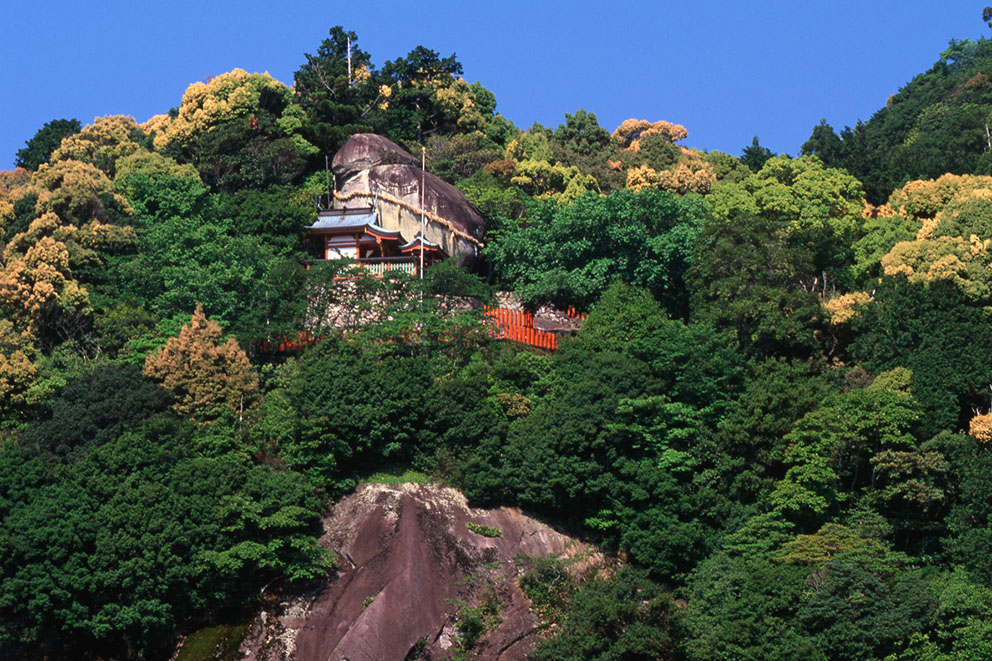Purification, Flames, and a Frenzy of Men
On the night of February 6 each year, upwards of 2,000 men brave the cold of winter to perform the Otō Matsuri, a wild rite of purification and renewal—by fire—designed to supplicate the mountain god(s) and pave the way for an auspicious year. In principle, the men have followed a strict code of abstinence for a week leading up to the event: performing daily water ablutions and bathing (naked) in the ocean; consuming only white-colored foods such as tofu, polished rice, and white fish cakes; and swearing off all contact with women. Today, the purification protocol extends for some only to the day of the event. Their minds and bodies pure, the “nobori-ko” (lit. “ascending children”), as they are called, don white clothing (robe, hood, headband), wrap straw ropes around their chest (7, 5, or 3 times, depending), and strap on straw sandals. Completing the get-up is a hand-held torch made of cypress wood, carved in the shape of a five-sided pyramid and stuffed with wood shavings.
 The “ascending children” first walk around and offer prayers at three sea-level worship sites (Asuka Shrine, Kumano Hayatama Taisha, and Myoshinjii temple). Sake and beer flows, white snacks flow, and the excitement builds. Then, as night falls, they climb the more than 500 ancient stone-hewn steps up Mt. Gongen to reach Kamikura Shrine and its massive boulder, “Gotobiki Iwa.” This giant monolith is like the most sacred of all rocks ever
The “ascending children” first walk around and offer prayers at three sea-level worship sites (Asuka Shrine, Kumano Hayatama Taisha, and Myoshinjii temple). Sake and beer flows, white snacks flow, and the excitement builds. Then, as night falls, they climb the more than 500 ancient stone-hewn steps up Mt. Gongen to reach Kamikura Shrine and its massive boulder, “Gotobiki Iwa.” This giant monolith is like the most sacred of all rocks ever
This truly wild rite is said to trace back to the legendary first sovereign of Japan, Jimmu, who eighth-century texts describe as the great-grandson of the sun goddess who ruled around the seventh century BC. The boulder and Kamikura Shrine are included within the “Sacred Sites and Pilgrimage Routes in the Kii Mountain Range” UNESCO World Heritage Site (designated 2004), as is the larger shrine below (Kumano Hayatama Taisha). The ritual was nationally designated as an Important Intangible Folk Cultural Property in 2016.
Any man, including a visiting tourist, is welcome to participate or observe today. But women are completely banned from the shrine on this day and from the event. Why? The two most commonly offered reasons include: (1) it is dangerous; and (2) it has always been this way. A third explanation is based on the “natural” gender division between men and women (what about non-binary individuals??): women send the “ascending children” off into the night to sequester themselves and pray; men mingle with the gods and bring the sacred flame back to the home and light the hearth; then women prepare a celebratory meal called “sakamukae” さかむかえ (note that saka can refer to both a physical slope or a mental/metaphysical state).
I’m leaving out many details, obviously. Victor Turner's wonderful write-up is now available here thanks to Paul Swanson! https://www.academia.edu/41969400/Victor_Turner_on_The_Kannokura_Festival_at_Shingu_The_Symbolism_of_Sun_Fire_and_Light
.



Comments
Post a Comment